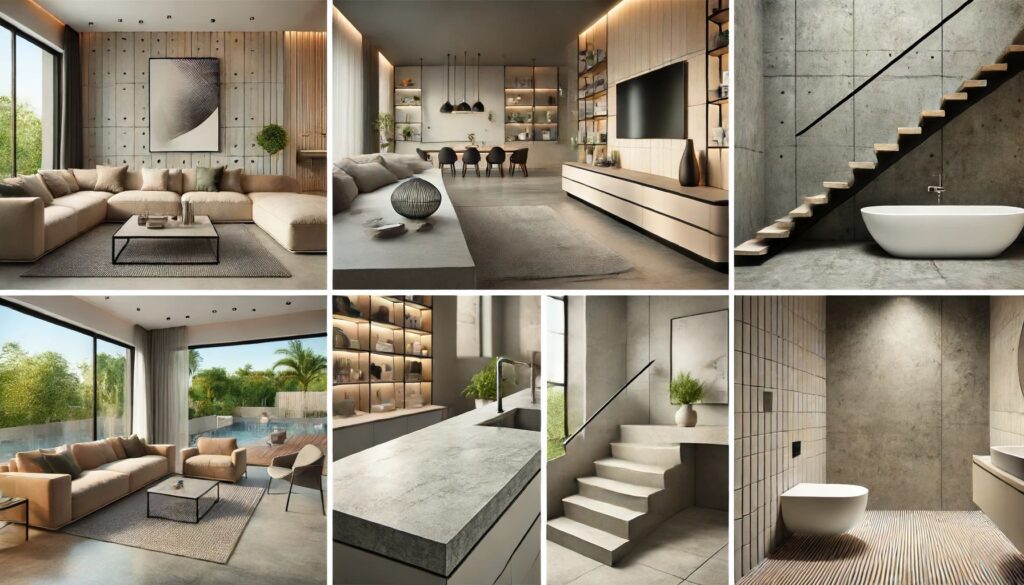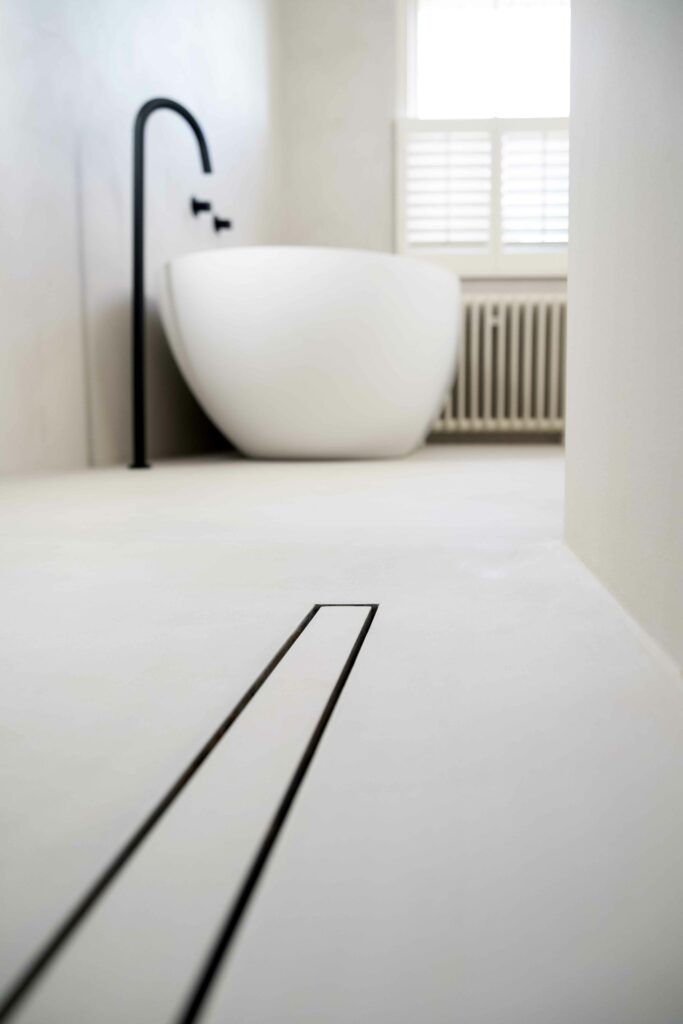About Our Bathroom Design Service.
Creating the perfect bathroom can be a daunting challenge, but our design service is here to simplify the process. Our goal is to understand your specific needs and the objectives you have for your project.
By concentrating on both aesthetic and functional aspects of design, we offer expert advice and craft stunning 3-D visualizations of your space. Our in-house design team is ready to collaborate closely with you, your chosen architect, interior designer, or builder to deliver a design solution that perfectly suits your bathroom.
What is Microcement?
Microcement, also known as micro concrete or micro screed, is a cement-based coating applied in thin layers to various surfaces, including floors, walls, and furniture. It creates a seamless, durable, and aesthetically pleasing finish. Its popularity stems from its versatility, durability, and ability to create continuous surfaces without grout lines.
Where Can Microcement Be Applied?

Microcement can be applied in a wide range of environments due to its adaptability. Common applications include:
– Bathrooms and Wet Rooms:Provides a waterproof, seamless finish ideal for high-moisture areas.
– Kitchens: Used on floors, countertops, and backsplashes for a modern look.
– Living Areas: Applied on floors and walls to create a contemporary and cohesive design.
– Commercial Spaces: Ideal for retail stores, restaurants, and offices due to its durability and aesthetic appeal.
– Outdoor Areas: Suitable for patios and terraces when a protective sealer is used.
Difference Between Microcement and Tiles
Microcement and tiles offer different advantages, making each suitable for specific applications:
– Seamlessness: Microcement provides a continuous surface without grout lines, reducing areas where dirt and mold can accumulate.
– Versatility: Microcement can be applied to a variety of surfaces, including existing tiles, concrete, and plasterboard. Tiles are limited to specific substrates.
– Thickness: Microcement layers are very thin (about 2-3 mm), while tiles add more thickness, which might be a concern in renovations.
– Design Flexibility:* Microcement offers more customization in terms of colors and finishes. Tiles have a fixed design and pattern.
Application Process
The process of applying microcement involves several steps to ensure a high-quality finish:
1. Surface Preparation
– The surface must be clean, dry, and free from any debris or contaminants. Any cracks or imperfections should be repaired, and a primer is applied to enhance adhesion.
2. First Layer Application
– The first layer of microcement is applied using a trowel, typically around 1-2 mm thick. This layer serves as the base coat and needs to dry for at least 24 hours.
3. Sanding
– Once the first layer is dry, it is sanded to remove any imperfections and ensure a smooth surface for the next layer.
4. Second Layer Application
– A second layer of microcement is applied in the same manner as the first. This layer adds depth and strength to the finish. It also needs to dry for 24 hours.
5. Final Sanding
– The surface is sanded again to achieve a smooth, even finish. Any dust from sanding is cleaned off before sealing.
6. Sealing
– A sealer is applied to protect the microcement and enhance its durability. The sealer also makes the surface water-resistant, making it suitable for bathrooms and wet rooms. The sealed surface needs to cure for 24 hours before use.
How Long Does the Application Take?
The entire microcement application process typically takes about 5 to 10 days, depending on the area size and complexity of the design. Here is a general timeline:
– Preparation: 1 day
– First Layer Application: 1-2 day
– Sanding and Second Layer Application: 2-5 days
– Final Sanding and Sealing: 2-3 days
– Curing Time: 2-3 day
Durability
Microcement is known for its durability and longevity. When applied and sealed correctly, it can last for many years, even in high-traffic areas. Its resistance to wear, scratches, and impacts makes it an excellent choice for both residential and commercial applications.
Cost of Microcement Materials
The cost of microcement materials varies depending on the brand and quality. On average, the materials can range from £120 to £180 per square meter. This cost includes the microcement mix, pigments, primers, and sealers.
Cost of Application
The cost of applying microcement also varies based on the complexity of the project and the professional’s rates. On average, you can expect to pay between £180 to £250 per square meter for professional application. This cost covers labor, preparation, application, and sealing.
Conclusion
Microcement is a versatile, durable, and aesthetically pleasing material that offers numerous benefits over traditional tiles. Its application process, while detailed, ensures a high-quality, seamless finish that can transform any space. Whether for bathrooms, kitchens, living areas, or commercial spaces, microcement provides a modern and stylish solution that is both practical and long-lasting.



